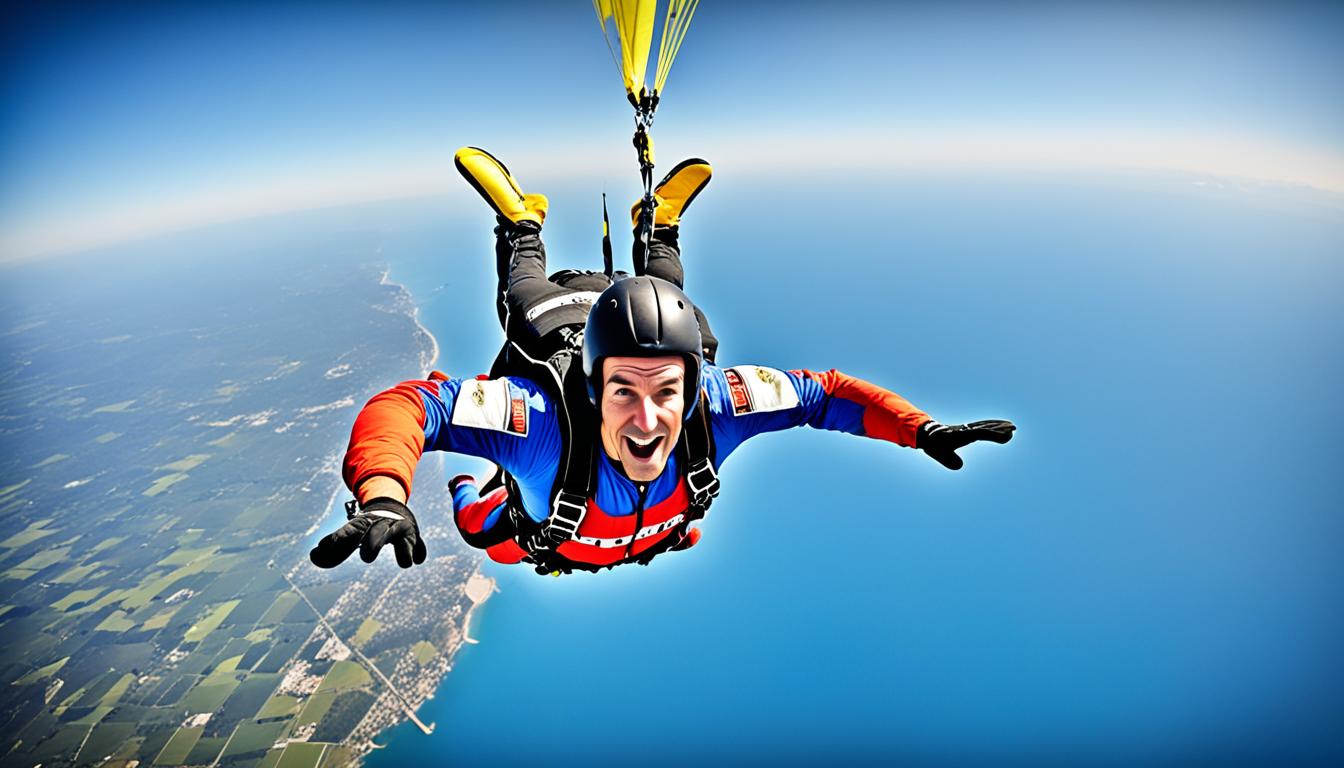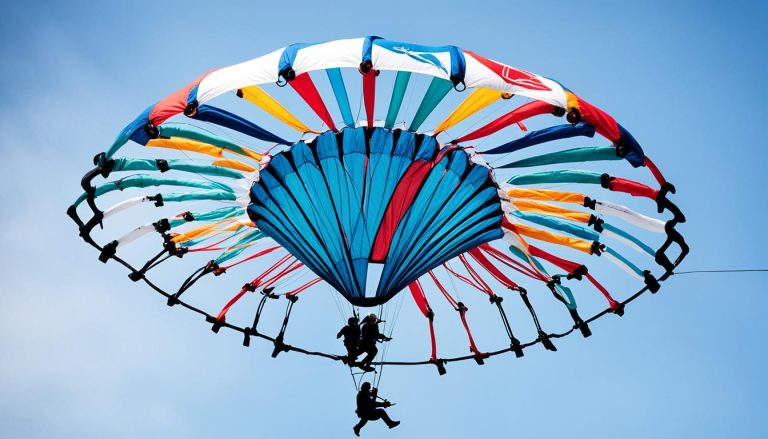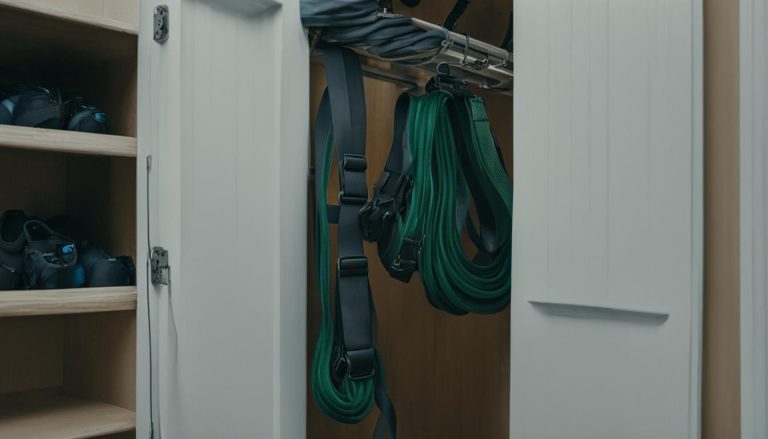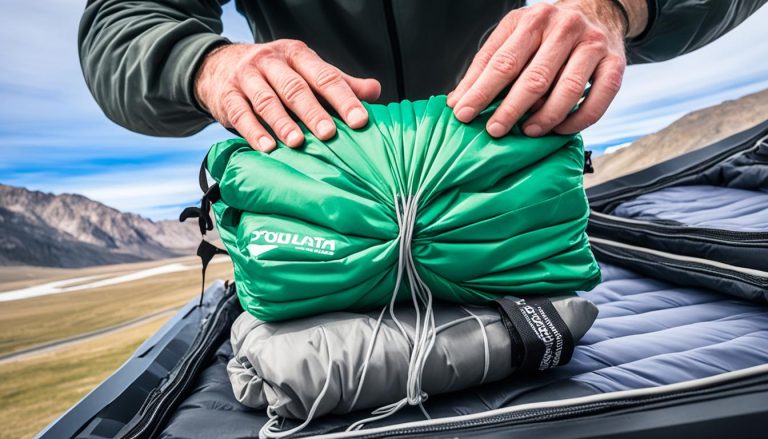The Role of Reserve Parachutes in Skydiving
Skydiving is an exhilarating sport that requires meticulous safety measures and well-maintained equipment. Central to skydiving gear is the parachute system, which includes the main parachute and the reserve parachute. While the main parachute is the primary canopy used during jumps, the reserve parachute serves as an essential backup in case of emergencies or malfunctions. Its importance cannot be overstated, as it can be a lifesaver in critical situations.
The reserve parachute is specifically designed to deploy quickly and reliably, with a strong focus on safety. It undergoes thorough inspection and packing by certified parachute riggers to ensure optimal functionality. These dedicated professionals play a vital role in maintaining the quality and reliability of reserve parachutes, adhering to strict skydiving safety procedures.
In case of an inability to deploy the main parachute or if it malfunctions, skydivers have specific handles on their skydiving gear to deploy the reserve parachute manually. Alternatively, automatic activation devices (AADs) can deploy the reserve parachute if the skydiver is unable to do so themselves.
According to statistics, in 2021, approximately 721 skydivers in the United States reported using their reserve parachutes out of approximately 3.57 million jumps. This emphasizes the significance and the real-life application of reserve parachutes in skydiving emergencies.
Overall, the role of reserve parachutes in skydiving cannot be underestimated. They provide an essential safety net, ensuring that skydivers have a dependable backup system in case of unforeseen circumstances. By adhering to skydiving safety procedures and properly maintaining their equipment, skydivers can enjoy the thrill of skydiving while placing their safety as the highest priority.
What is a Backup Parachute (AKA Reserve Parachute)?
A backup parachute, also known as a reserve parachute, is the second canopy inside a skydiving rig. It is designed to be used in emergency situations when the main parachute cannot be deployed or malfunctions. While the main parachute is used on every jump, the reserve parachute is there as a backup. The reserve parachute is a rectangular piece of fabric that is specifically designed for fast and reliable deployment. Its sole purpose is to safely guide the skydiver to the ground in the event of an emergency.
| Key Features | Benefits |
|---|---|
| Designed for emergency situations | Provides a backup option when the main parachute fails |
| Rectangular fabric canopy | Enables fast and reliable deployment |
| Inside the skydiving rig | Accessible and ready for immediate use |
| Safety-certified equipment | Offers reassurance and peace of mind |
Having a backup parachute is crucial in ensuring the safety of skydivers. In case of an emergency situation where the main parachute cannot be deployed, the reserve parachute serves as a reliable solution. Its rectangular fabric canopy is designed to quickly and efficiently open, allowing the skydiver a safe descent. Being securely placed inside the skydiving rig, the reserve parachute is easily accessible and ready to be deployed when needed.
With safety as the utmost priority, the reserve parachute is meticulously inspected and certified for optimal performance. Skydivers can have confidence in this backup system, knowing that it has undergone rigorous testing and meets the necessary safety standards.
How is a Reserve Parachute Different from a Main?
When it comes to skydiving, understanding the key differences between a reserve parachute and a main parachute is essential. These differences encompass design, size, and the individuals qualified to handle them.
Design: A reserve parachute is specifically designed for fast and reliable deployment during emergency situations. Its primary focus is on safety rather than performance or enjoyment. Main parachutes, on the other hand, can have various design characteristics that enhance flying experience and maneuverability, catering to the preferences of individual skydivers.
Size: Reserve parachutes are typically larger in size compared to main parachutes. Even if a skydiver chooses a small main parachute for their jumps, the reserve parachute is generally much bigger. This larger size ensures that the reserve parachute can handle emergency situations and safely guide skydivers to the ground.
Parachute Riggers: Inspecting and packing parachutes require specialized skills and knowledge. Reserve parachutes can only be inspected and packed by certified parachute riggers who have undergone rigorous training and certification by the Federal Aviation Administration (FAA). These riggers have the expertise needed to handle reserve parachutes with extreme care. On the other hand, main parachutes can be packed by the skydiver themselves or by someone under the supervision of a rigger.
Understanding these key distinctions between reserve parachutes and main parachutes is crucial to ensuring the safety and reliability of skydiving equipment. It highlights the specialized training required for parachute riggers and emphasizes the importance of using the appropriate parachute in different skydiving scenarios.
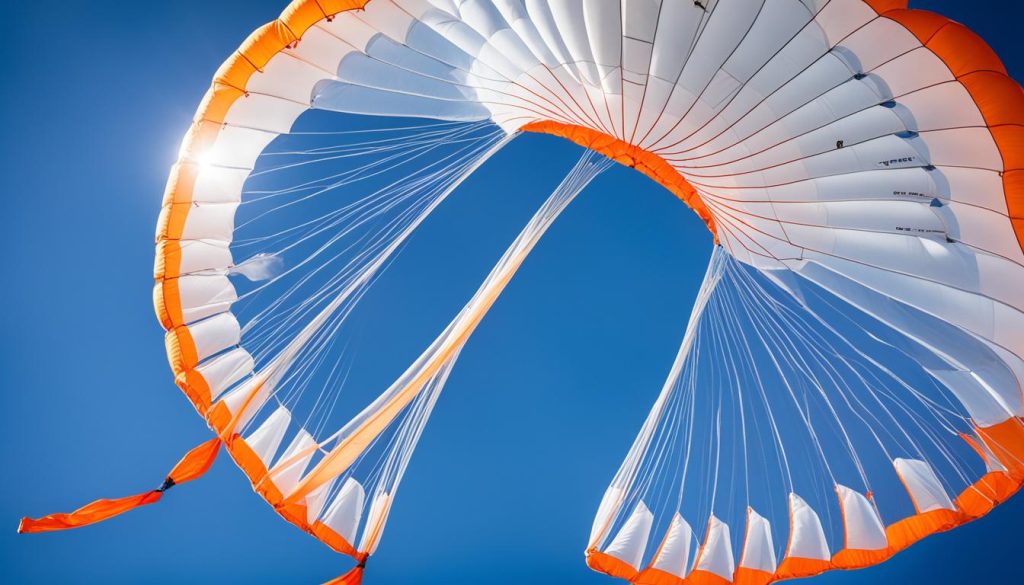
How do Skydivers Pull Their Backup Parachute?
Skydivers are trained in emergency procedures for deploying their backup parachute in the event of a malfunction or the inability to use the main parachute. The process begins with the deployment of the main parachute, where the skydiver reaches to the bottom of their parachute container and pulls a circular piece of fabric known as a pilot chute. The pilot chute catches air and initiates a series of events that result in the main canopy being pulled off the skydiver’s back and out of its container.
In the case of an emergency, skydivers have two handles located on the front of their rig. To release the main canopy and make way for the reserve parachute, they must pull the handle on the right. Once the main canopy is cut away, they can then deploy the reserve parachute by pulling the handle on the left.
This process ensures that skydivers have a reliable backup option in case of any unforeseen circumstances. It allows them to quickly transition to the reserve parachute, ensuring their safety during the descent to the ground.
Skydivers rely on their training and emergency procedures to deploy their backup parachute when needed. By following proper protocols and utilizing the appropriate handles, they can swiftly transition to their reserve parachute and ensure a safe landing.
Reserve Parachute Statistics
In the United States, reserve parachute usage is closely monitored and reported. In 2021, 721 skydivers reported using their reserve parachutes out of approximately 3.57 million jumps. This statistic highlights the importance of having a reliable backup system in place for skydivers, as emergencies can occur even with rigorous safety measures in place.
Emergency Parachute Deployment Devices
Alongside the manual deployment of the reserve parachute through the use of handles, skydivers also have access to additional safety devices. These devices can automatically deploy the reserve parachute if necessary, increasing the chances of a successful rescue in emergency situations. Some of these devices include:
- Reserve Static Lines (RSL): Attached to the main parachute, the RSL simultaneously pulls the reserve pin and deploys the reserve parachute in the event of a cutaway.
- Main-Assisted Reserve Deployment (MARD) Systems: Utilize the force generated by jettisoning the main parachute to assist in more rapid reserve parachute deployment.
- Automatic Activation Devices (AADs): Equipped with air pressure sensors, AADs can deploy the reserve parachute automatically when certain criteria are met, such as a rapid descent at a low altitude.
| Emergency Parachute Deployment Devices | Benefits |
|---|---|
| Reserve Static Lines (RSL) | Simplifies emergency procedures and adds an additional layer of safety for rapid reserve deployment. |
| Main-Assisted Reserve Deployment (MARD) Systems | Expedites the reserve parachute deployment process, minimizing response time in emergency situations. |
| Automatic Activation Devices (AADs) | Provides an automated backup system that activates the reserve parachute when essential conditions are met, ensuring prompt deployment. |
Incorporating these emergency parachute deployment devices further enhances the safety and reliability of reserve parachutes, providing skydivers with an added layer of protection during their jumps.
Do Reserve Parachutes Automatically Deploy?
While skydivers are responsible for deploying their reserve parachute, there are safety devices that can assist in the deployment process. These devices include:
- Reserve Static Line (RSL): A reserve static line is attached to both the main parachute and the reserve cord or pin. In the event of a cutaway, where the main parachute is released, the RSL is designed to simultaneously pull the reserve pin and deploy the reserve parachute.
- Main-Assisted Reserve Deployment (MARD) Systems: MARD systems utilize the force generated by the main parachute being jettisoned to assist in deploying the reserve parachute more quickly. The force helps accelerate the deployment process and ensure a fast and reliable canopy inflation.
- Automatic Activation Devices (AADs): AADs are small computer devices that monitor the speed and altitude of the skydiver using air pressure sensors. If certain criteria, such as a rapid descent at a low altitude, are met and the skydiver fails to deploy the reserve parachute manually, the AAD will automatically activate and deploy the reserve parachute.
These safety devices enhance the reliability and effectiveness of reserve parachutes, providing an added layer of security for skydivers in emergency situations.
Skydiving Safety Procedures and Equipment Maintenance
Skydiving safety procedures are of utmost importance to ensure a safe and enjoyable experience for all skydivers. One crucial aspect of skydiving safety is the regular inspection and maintenance of reserve parachutes. Reserve parachutes must be inspected and repacked every 180 days by certified parachute riggers. These parachute riggers undergo specialized training and certification from the Federal Aviation Administration (FAA) to handle reserve parachutes with the utmost care and expertise.
The inspection and repacking process involves a thorough examination of the reserve parachute to identify any potential issues or damage. The rigger carefully inspects the canopy, suspension lines, and all other components to ensure they are in optimal condition. They also assess the compatibility and functionality of the deployment system, including handles and release mechanisms. This meticulous inspection ensures that the reserve parachute is ready for reliable deployment in case of an emergency.
Once the inspection is complete, the rigger proceeds with repacking the reserve parachute. Repacking involves correctly folding and packing the canopy, suspension lines, and deployment system to ensure smooth and swift deployment when necessary. The repacking process follows specific guidelines and manufacturer recommendations to maintain the highest standard of safety and performance.
It is important to note that the maintenance requirement for reserve parachutes applies regardless of whether they have been used or not. Even if a skydiver has not deployed their reserve parachute, it is essential to adhere to the inspection and repacking schedule to ensure its reliability in case of an emergency.
By following these safety procedures and prioritizing equipment maintenance, skydivers can enhance the safety and reliability of their reserve parachutes. The expertise of certified parachute riggers and their commitment to meticulous inspections and repacking play a crucial role in ensuring skydiving safety.
Reserve Parachute Inspection and Repacking
| Process | Description |
|---|---|
| Inspection | A comprehensive inspection of the reserve parachute and its components to identify any potential issues or damage. |
| Compatibility Check | Evaluation of the compatibility and functionality of the deployment system, including handles and release mechanisms. |
| Canopy Repacking | Careful folding and repacking of the reserve parachute’s canopy, suspension lines, and deployment system according to specific guidelines and manufacturer recommendations. |
Related Safety Measures:
- Regular equipment inspection and maintenance
- Proper training in emergency procedures
- Use of safety devices such as automatic activation devices (AADs) and reserve static lines (RSLs)
- Adherence to manufacturer guidelines and recommendations
Conclusion
Reserve parachutes play a critical role in skydiving safety, serving as a reliable backup in case of main parachute malfunctions or deployment failures. Designed for fast and dependable deployment, reserve parachutes ensure the safety of skydivers by guiding them safely to the ground. Experienced and certified parachute riggers meticulously inspect and repack reserve parachutes to ensure their optimal performance, adhering to industry standards and safety regulations.
Skydivers receive comprehensive training to handle emergency procedures and deploy the reserve parachute when necessary. This training equips them with the knowledge and skills to confidently handle unexpected situations, ensuring a higher level of safety during skydiving activities. Additionall

